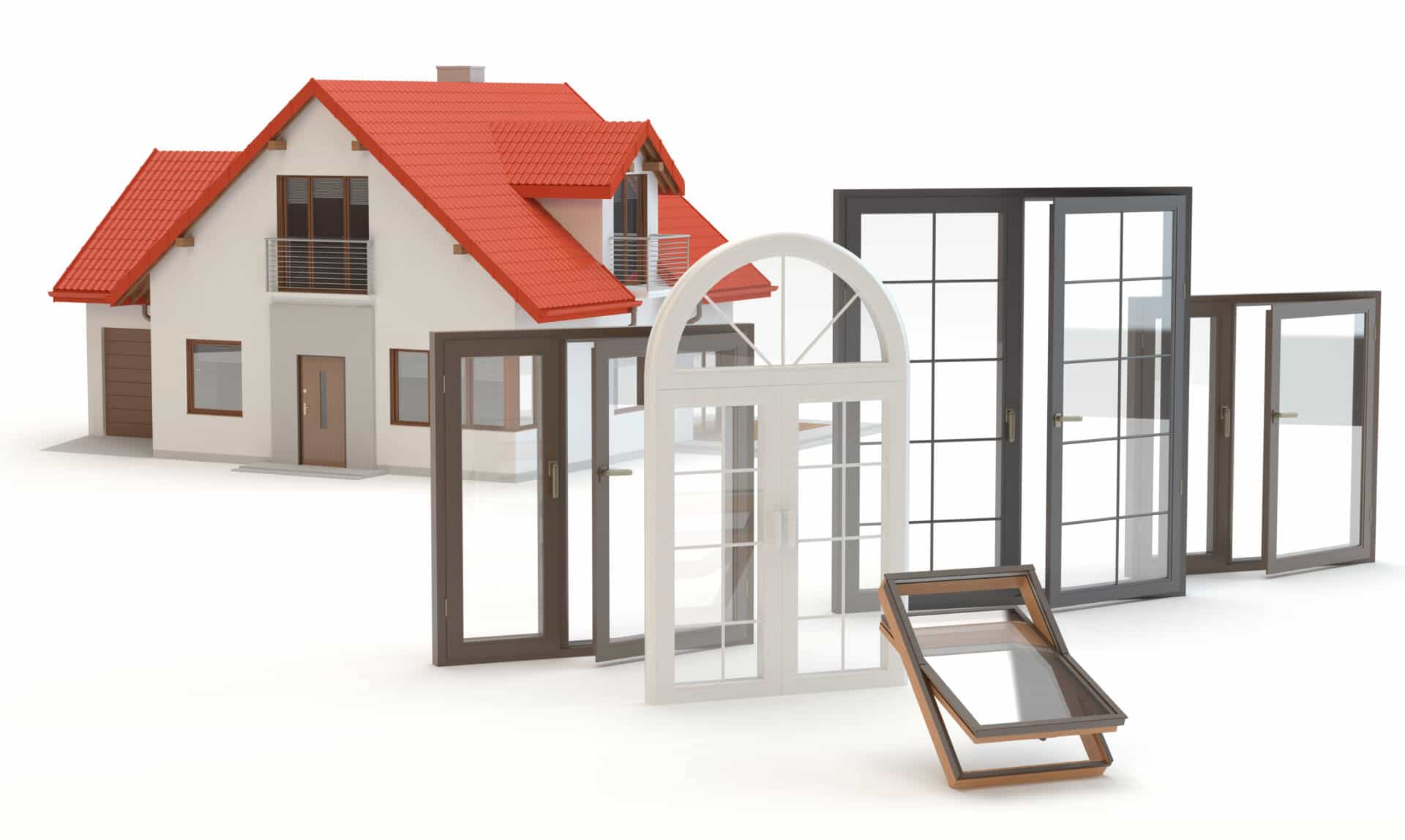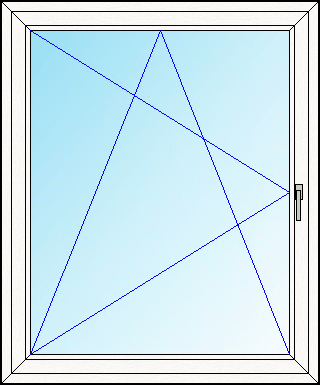
Windows And Doors Configurations

Fixed Windows
A fixed window is a type of window that cannot be opened or closed. It is also sometimes referred to as a “picture window” because it is designed to provide a clear and unobstructed view of the outside. Fixed windows are typically installed in locations where ventilation is not a primary concern or where the main purpose is to let in natural light and provide a view.
Fixed windows are popular for several reasons:
- Aesthetic Appeal: Fixed windows can be customized in various shapes and sizes, making them an excellent choice for architectural design and enhancing the visual appeal of a room.
- Energy Efficiency: Since fixed windows do not open, they are generally more energy-efficient than operable windows because they have fewer gaps and seals, reducing the potential for air leakage.
- Low Maintenance: Fixed windows require minimal maintenance because they do not have moving parts that can wear out or require regular cleaning.
- Sound Insulation: Fixed windows can offer better sound insulation compared to operable windows because they are sealed shut.
Common places where you might find fixed windows in a house include living rooms, dining rooms, and areas where a homeowner wants to maximize natural light and outdoor views without the need for ventilation. They are often used in combination with other types of windows, such as sliding windows or casement windows, to provide a balance between aesthetics and functionality in a home’s design.

Tilt Only Windows
A tilt-only window is a type of window that has a special opening mechanism. Unlike traditional windows that swing open on hinges or slide horizontally, tilt-only windows operate by tilting inwards from the top. They are sometimes referred to as hopper windows.
The main advantage of bottom-hung windows is that they allow controlled ventilation and are easy to clean. When you want to ventilate a room, you can tilt the top of the window inwards, allowing fresh air to enter, while keeping the bottom of the window closed for safety and security. This feature is particularly useful in situations where you want to keep the rain out but still allow air to circulate.
Often found in modern or European-style homes and buildings, tilt windows are renowned for their versatility and energy efficiency. They provide an alternative to traditional windows and offer benefits such as improved insulation and ease of maintenance.

Tilt & Turn Window
A tilt-and-turn window is a type of window design commonly used in houses and buildings, especially in Europe. It is a versatile window system that can perform two main functions: tilting inwards for ventilation and turning inwards for easy cleaning and access. Here’s how it works:
1. Tilt Function: When you want to ventilate the room without fully opening the window, you can use the tilt function. This allows you to pivot the top of the window sash inwards, creating a small gap at the top of the window while keeping the bottom of the window closed. This provides ventilation while maintaining security and preventing rain from entering.
2. Turn Function: If you need to access the outside of the window for cleaning or want to fully open the window for better airflow, you can use the turn function. In this mode, you can rotate the entire sash of the window inwards, allowing for easy cleaning and a wide opening for maximum ventilation. This is especially useful for windows in multi-story buildings or where external access for cleaning is difficult.
Tilt-and-turn windows are known for their flexibility, energy efficiency, and ease of use. They often come with multiple locking points for enhanced security and are available in various materials like uPVC, aluminium, or wood, depending on your preferences and architectural style. These windows are popular in regions with a focus on energy efficiency and modern design due to their ability to provide both secure ventilation and easy maintenance.

Entry doors
Our entrance doors are designed with modern and elegant aesthetics. Each unit is custom-made to meet your unique needs, providing you with warmth, security and a distinctive statement piece for your home.
With an array of infill panel options such as plain, grooved, decorative or glazed with obscure or decorative glass, you can creatively design a truly one-of-a-kind door.
Our entrance doors are offered in uPVC, wood and aluminium varieties. The doors are fitted with a 3 to 5 multipoint automatic locking system and ‘A’ class cylinder locks.
They come in both single and double opening options, and when paired with matching sidelights, they make a stunning design statement.

Lift And Slide Doors
The lift and slide door serve as an ideal connecting element that seamlessly links rooms or winter gardens with outdoor spaces. The doors directly rest on the track, and the handle only needs to be rotated 180° to elevate the door onto its rollers. Thus, the door remains perfectly positioned at all times. It can be completely closed to achieve an optimal seal or lifted entirely, enabling the door to glide effortlessly on the heavy-duty running gear. Due to this feature, you can efficiently secure the door in an open position to prevent accidental movement and create secure ventilation using internal handles.
Lift & Slide Doors are available in uPVC, timber and aluminium. Composite and timber options can improve thermal performance, but typically have a larger profile. uPVC provides a cost-effective alternative to aluminium but tends to increase sightlines and limit sizes due to profile strength.
Lift & Slide Doors are capable of carrying increased weights of up to 200-300kg, and certain systems can even accommodate up to 400kg. Thanks to their advanced running gears, these doors are much easier to move, regardless of the weight.
